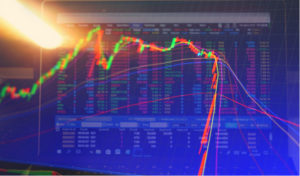
By Nokwan007 @ Shutterstock.com
Writing at the Financial Times, Michael Mackensie explains that a reversal in the the decade long, quantitative easing fueled boom in asset price is worrying. He writes:
The stellar ride asset prices have enjoyed since the demise of Lehman Brothers dominates the financial system. And the prospect of a reversal is rightfully worrying.
Years of ultra low, and in some cases negative, interest rates, alongside massive quantitative easing programmes, have been a grand experiment in monetary policy. Low rates have compelled investors to seek higher returns from riskier assets such as equities, junk bonds and, until early this year, local currency emerging market debt.
Another feature of bond yields stuck at low levels is that they enhance the value of companies’ future cash flows and, in doing so, help share prices. This explains in part the appeal of owning fast-growing tech companies that generate vast cash flows, such as Apple and Amazon, that in recent weeks have reached $1tn valuations.
When they embarked on QE the aim of central banks was to create a wealth effect in the form of rising equity and home prices that, in turn, would bolster the broad economy. In QE’s early days, fear of an inflationary surge was strongly felt among some investors. Gold bugs can only look back wistfully on 2011, when the spectre of QE unleashing inflation drove the precious metal to the dizzy heights of $1,900 an ounce.
The fact that an inflation scare didn’t materalise is why the 10-year Treasury note yield sits well shy of its April 2010 peak of 4 per cent, and its inability to sustain a rise above 3 per cent continues to support US stocks and junk bonds.
Rather than generate a surge in inflation, a data point helps illustrate that it has been the boom in asset prices that has defined the decade for financial markets since the crisis.
Read more here.
